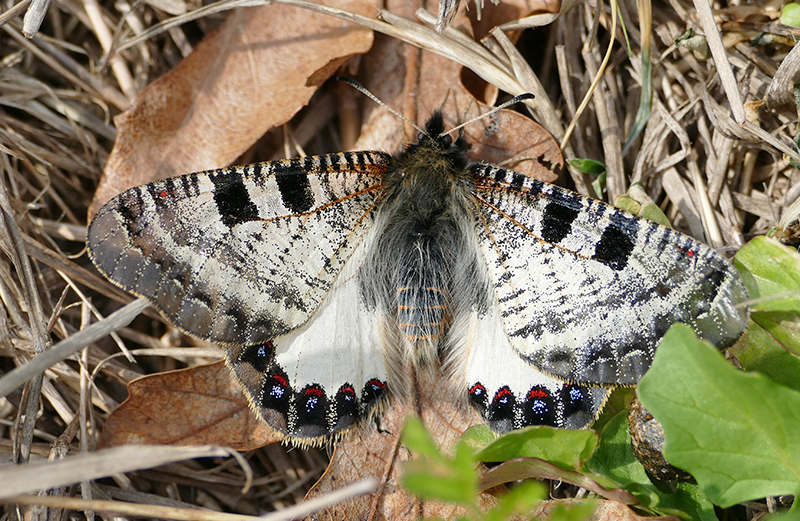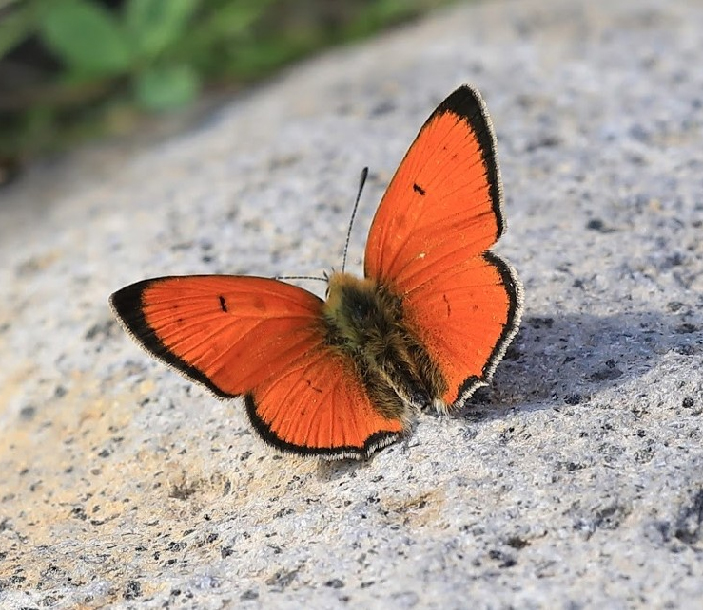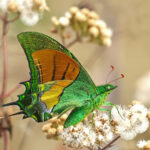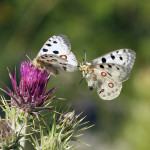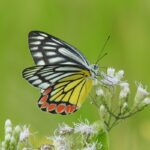Description
Join us in Greece for an early feast of spring butterflies, our main target being the stunning False Apollo!
Northeast Greece has an exceptional flora and fauna because of its transitional geographic position with influences of the Mediterranean, Anatolian and Euro-Siberian regions. Butterflies of very special importance in the East Rodopi Mountains include strong populations of the geographically restricted and regionally endemic species the False Apollo (Archaon apollinus), Eastern Festoon (Zerynthia cerisy) and Grecian Copper (Lycaena ottomana). Southern Festoon (Zerynthia polyxena) is also common among other typically southern Balkan and western Anatolian species, including such specialities as Eastern Baton Blue (Scolitantides vicrama), Powdered Brimstone (Gonopteryx farinosa), Eastern Greenish Black-tip (Euchloe penia), Small Bath White (Pontia chlorodice), Krueper’s Small White (Pieris krueperi), Southern Comma (Polygonia egea) and Camberwell Beauty (Nymphalis antiopa). We may also see other early spring species such as Large Tortoiseshell (Nymphalis polychloros), Eastern Dappled White (Euchloe ausonia), Green-underside Blue (Glaucopsyche alexis) and Green Hairstreak (Callophrys rubi).
The Mountains of the Rodopi are a long range that stretches across northeast Greece, where their high peaks form the land border with Bulgaria. Towards the end of the range, the East Rodopi Mountains form a low hilly region known as the Evros Hills and these in turn eventually come down to and meet with the Aegean coastline in a region known as the Ismaros Hills. Much of the area is densely clothed in thermophilous Balkan Oak forest (Quercus frainetto, Q. pubescens & Q. cerris) and these are probably the most expansive tracts of this type of deciduous forest vegetation in Greece. These forests, along with their associated and floristically rich under story, have a high biological and conservation value and are protected within numerous Natura2000 sites (http://natura2000.eea.europa.eu/#).
Dadia National Park, situated on the most easterly section of these forested hills and just inland from the Evros river, along which runs the border between Turkey and Greece, is known internationally for its populations of Eurasian Black Vulture (Aegypius monachus), Griffon Vulture (Gyps fulvus) and Egyptian Vulture (Neophron percnopterus) as well as for its great diversity of resident and migratory birds of prey. Wolves are frequent and have thriving and expanding populations in the complex topography of forested hillsides and valleys.
In addition to oak, coniferous forests of Aleppo Pine (Pinus brutia) occur and at higher altitudes (above 700m) the oak forest grades into Beech forest, here it is mostly Oriental Beech (Fagus sylvatica subspecies orientalis). At lower altitude or in warmer drier areas, shrub communities develop. These include the distinctive Eastern Mediterranean High Maquis with Eastern Strawberry Tree (Arbutus andrachne), recognisable by its characteristic red stems, or a matorral of evergreen oak (Quercus coccifera/Q. ilex), which is most frequent in coastal areas. In low hilly regions a deciduous thorny shrub formation known as a Shiblyak occurs, which is dominated by Oriental Hornbeam (Carpinus orientalis) and Christ’s thorn (Paliurus spina-christi) brushwood.
A noticeable feature throughout the eastern Rodopi Mountains is the occurrence of numerous hill streams along which develop biologically important riverside forests. A very special form is the occurrence of gallery forests of ancient and often massive Oriental Plane (Platanus orientalis). These streamside biotypes add hugely to the biodiversity of the region. Examples of regionally important insects that depend on these forest streams (albeit unlikely to see on the wing at this time of year) include the locally endemic dragonfly, Thracian Emerald (Somatochlora borisi) and the regional endemic Balkan Emerald (S. meridionalis).
The importance of these forests to invertebrates has been little studied but the region has a distinctive fauna with many species that are rare or have otherwise largely disappeared from the European landscape. One example manifestation of this is the occurrence here of some of Europe’s largest and dramatic insects. Europe’s largest moth with a wingspan of 15 cm, the Giant Peacock Moth (Saturinia pyri) is common but of more local occurrence is the rather special heavyweight lasiocampid moth, theEastern Lappet (Pachypasa otus). Enormous predatory crickets of the genus Saga, sway as if in a breeze as they walk and prey on other crickets, but the large ground dwelling and armour plated genus Callimenus is surely not one of those.
The largest Hemiptera in the world, the Giant Water Bug (Belostomatidae) survives in forest streams in its only European region; the terrifying looking but harmlessMammoth Wasp, Megascolia maculata, which at 5-6 cm length is Europe’s largest wasp, is a parasite of European Rhinoceros Beetle (Oryctes nasicornis). Apart from theRhinoceros beetle there are many other giant beetles including the wood feeding cerambycids (Aegosoma scabricorne, Cerambyx cerdo, Prinobus myardii, Prionus besikanus & Rhesus serricollis) and the delightfully named Pine Chafer (Polyphylla fullo) can even be seen in downtown Alexandroupoli.
READ FULL HOLIDAY DETAILS


